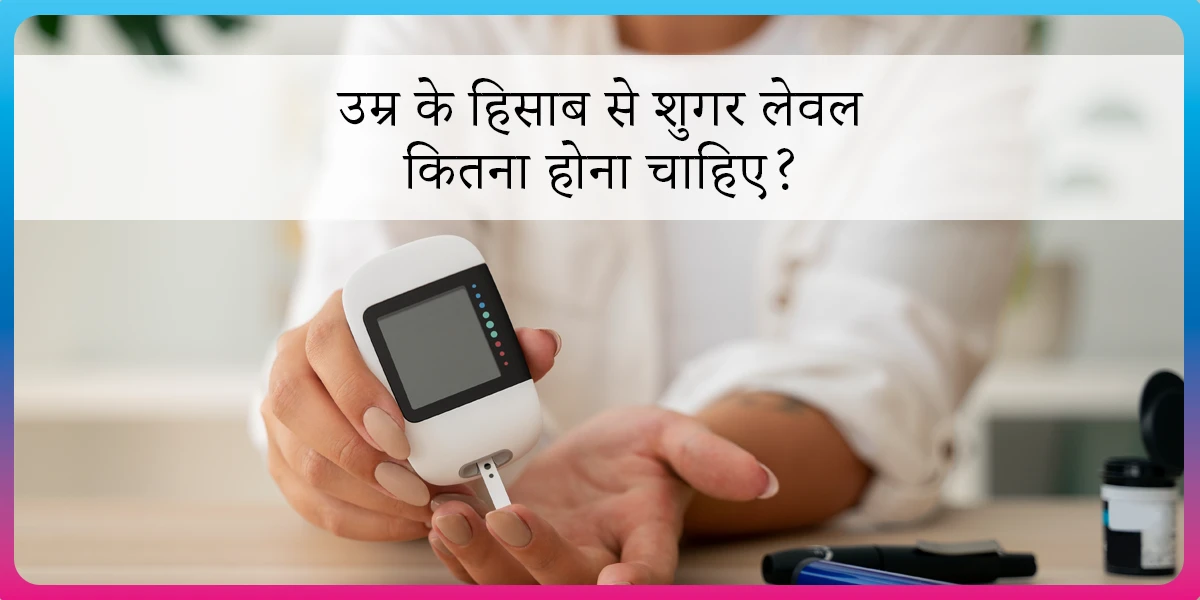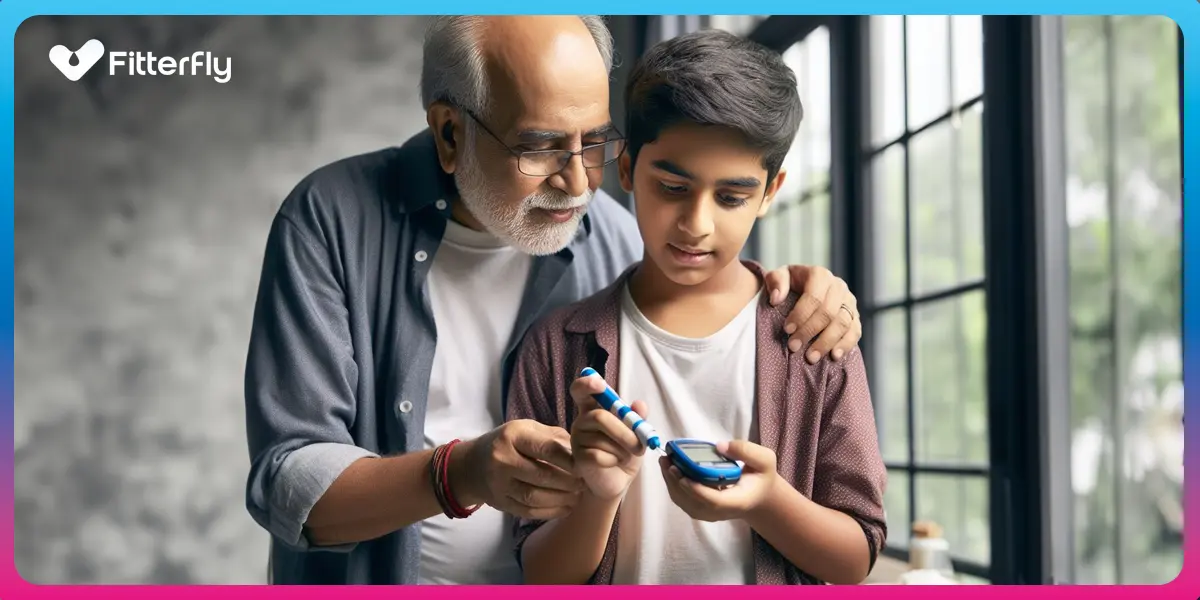Understanding Diabetic Retinopathy

People with diabetes sometimes miss or don’t recognize the warning signs of health issues. When you ignore signs like changes in your vision, eye problems etc, can lead to several serious complications of diabetes.
Diabetic retinopathy is one of them.
You know, according to a study published in 2022, approximately 30 lakh people aged 40 years or older in India are affected by diabetic retinopathy (vision-threatening diabetic retinopathy).
Let’s discuss in detail what diabetic retinopathy is and how you can recognize it if you have diabetes.
Before we discuss diabetic retinopathy, if you have any eye-related problems, please consult with an eye doctor before making any medical changes. Remember, this blog provides information and guidance.
What is Diabetic Retinopathy?
Diabetic retinopathy is an eye condition that affect people with diabetes and may lead to various eye-related problems.
- Diabetic retinopathy can lead to several conditions related to eyes like vision loss or blindness.
- It impacts the retina, which is the light-sensitive layer at the back of the eye.
What are the Symptoms of Diabetic Retinopathy?
Diabetic retinopathy often starts without symptoms.
- However, you might notice changes in your vision, like difficulty reading or seeing things far away.
- These changes might be temporary.
- Sometimes, you might also see dark spots or lines resembling spiderwebs in your vision.
- While these can clear up on their own, it’s important to see an eye doctor quickly to prevent the condition from worsening.
What Causes Diabetic Retinopathy?
When your blood sugar is too high for a longer period, it damages the blood vessels in your body, including your eyes (specifically damaging the retina).
To know your chances of Diabetes reversal, take the Diabetes Reversal TestDiabetes Reversal
Calculator
What are the Potential Complications Due to Diabetic Retinopathy?
If left untreated, diabetic retinopathy can cause several other eye-related complications such as:
- Diabetic Macular Edema (DME): This affects the retina and makes your vision blurry.
- Neovascular Glaucoma: Abnormal blood vessels block fluid from draining properly, causing a type of glaucoma.
- Retinal Detachment: Scar tissue makes the retina pull away from the back of your eye.

What are the Risk Factors of Diabetic Retinopathy?
Anyone with diabetes (type 1, type 2, or gestational diabetes) can get diabetic retinopathy. Some of the risk factors could be
- Long-standing uncontrolled diabetes
- High blood sugar and cholestrol levels
- Smoking & alcohol etc.
- Other diabetes complications like hypertension, neuropathy, kidney problems, etc.
How to Prevent Diabetic Retinopathy?
If you notice any changes in your eyes or vision, the first step is to see an ophthalmologist for a comprehensive check-up. Make sure to keep up with regular annual check-ups as well.
These exams can catch early signs of retinopathy and help monitor your vision.
To help prevent diabetic retinopathy, below are some steps that you should follow:
1. Lifestyle Changes
Regular exercise and a balanced diet are the MOST IMPORTANT for managing diabetes effectively. You should also follow your doctor’s advice on diet and exercise to keep yourself healthy.
2. Manage Your Diabetes Well
Check your blood sugar, HbA1c, and cholestrol levels regularly. By following your doctor’s guidance on insulin and diabetes medications, you can achieve your A1C target and reduce the risk of complications like diabetic retinopathy.
3. Regular Eye Check-ups
Schedule annual comprehensive eye exams to catch any early signs of retinopathy.
4. Quit Smoking
Smoking can damage your blood vessels and increase the risk of diabetic complications.
How We At Fitterfly Can Help You?
If you start noticing any changes in your vision, seeing an ophthalmologist as soon as possible is the first step.
At Fitterfly, we believe that tackling the root cause that is diabetes is the key to not just managing diabetic retinopathy but also preventing other complications like cataracts, dry mouth, and leg pain.
We at Fitterfly provide a holistic approach to managing your diabetes like a pro. We help you in every aspect of your lifestyle, from diet and nutrition to mental wellness and fitness, helping you take control of your health comprehensively.
We encourage you to contact us today at 08068507599 to learn more about how our Diabetes Prime Program can benefit you or a loved one.
Reduced HbA1c by HALF in 6 months


6.6%
Happy members
EMI
Guarantee
4.8/5
Diabetes Prime Program
This blog provides general information for educational and informational purposes only and shouldn't be seen as professional advice.
Frequently Asked Questions
What are the stages of diabetic retinopathy?
Diabetic retinopathy progresses through four stages: 1. Mild nonproliferative retinopathy: Small swelling in the retina's blood vessels. 2. Moderate nonproliferative retinopathy: Some blood vessels in the retina get blocked. 3. Severe nonproliferative retinopathy: More blood vessels are blocked, cutting off blood supply to parts of the retina. 4. Proliferative diabetic retinopathy (PDR): New blood vessels grow in the retina, which can cause serious vision problems.
What are the treatment options for diabetic retinopathy?
Treatment options for diabetic retinopathy include: 1. Medications: Drugs to reduce swelling in the eye. 2. Laser treatment: To shrink abnormal blood vessels. 3. Vitrectomy: Surgery to remove blood and scar tissue from the eye. 4. Blood sugar control: Keeping blood sugar levels in check to slow down the disease.
Who should screen for diabetic retinopathy?
Screening for diabetic retinopathy should be conducted by professionals skilled in the screening process, including ophthalmologists, physicians, optometrists, and ophthalmic assistants. Additionally, trained field-level workers can also perform screenings.
Who should be screened for diabetic retinopathy?
1. People with Known Diabetes: Annual screening is recommended for people with diagnosed diabetes. 2. Opportunistic Screening: Screening should be conducted for all patients attending a clinic, regardless of their visit reason. 3. Mass Screening: Specific camps can be organized for the mass screening of diabetic retinopathy.




















